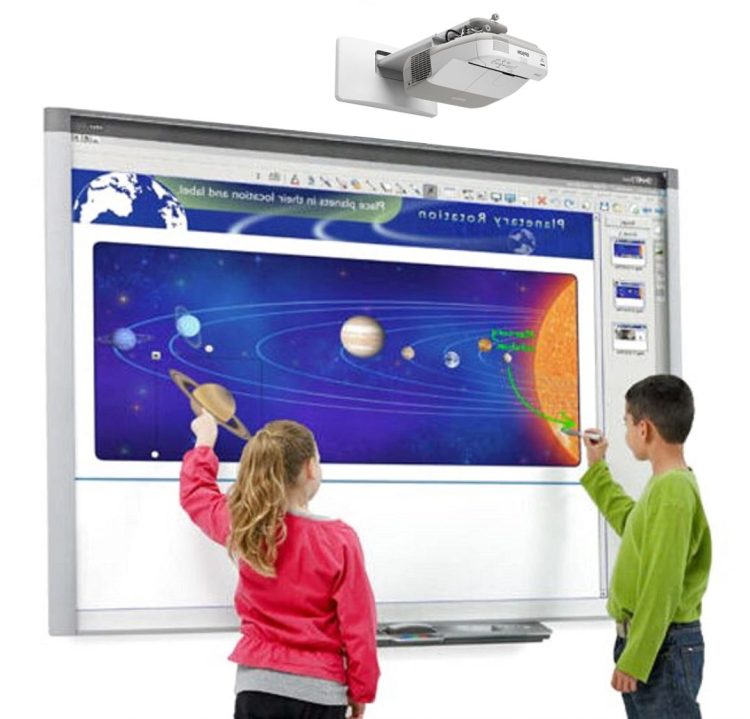Teaching Digital Board Price Guide for Schools & Colleges

Modern classrooms are evolving rapidly. From chalkboards to projectors to fully interactive classrooms, the way teachers deliver lessons has changed dramatically. At the center of this transformation is the digital board for teaching, an innovation that blends traditional teaching with advanced technology. These boards allow teachers to write, draw, annotate, and integrate multimedia content seamlessly, making lessons more engaging and effective.
However, one of the most common questions schools and colleges face is about cost – how much should they budget for a digital board, and what factors influence the price? For many institutions, the journey starts with exploring the digital board for teaching 75 inch model, a popular choice for classrooms of all sizes.
Why Schools & Colleges Are Investing in Digital Boards
Before diving into costs, it’s worth asking – why are digital boards worth the investment? The answer lies in the benefits they bring to both teachers and students:
- Enhanced engagement: Lessons come alive with videos, animations, and interactive exercises.
- Time-saving tools: Teachers can save, reuse, and share lessons instead of starting from scratch each time.
- Hybrid learning readiness: Boards integrate seamlessly with online classes, essential in today’s blended education system.
- Collaboration: Students actively participate through interactive features, boosting understanding and retention.
These boards are not just teaching aids – they’re investments in academic excellence.
Factors Influencing the Price of Digital Boards
The digital board for teaching is available in different models and price ranges. The cost varies depending on several factors:
- Size: Larger boards like the 75-inch model are ideal for bigger classrooms, while smaller options may suffice for compact spaces.
- Resolution and display quality: Higher resolutions provide sharper visuals, important for subjects like science or design.
- Touch technology: Multi-touch boards allow several students to interact simultaneously, ideal for group activities.
- Connectivity: Boards with advanced connectivity (Wi-Fi, Bluetooth, HDMI, USB) offer greater versatility.
- Software features: Some boards come bundled with interactive teaching apps and cloud integration.
- Durability: Scratch-resistant and long-lasting materials impact both price and longevity.
Understanding these variables helps schools choose the right fit for their needs and budgets.
Average Price Ranges Schools Should Expect
While exact pricing can vary by brand and region, here’s a rough breakdown of what schools and colleges can expect when budgeting for a digital board:
- Entry-level boards: ₹70,000 – ₹1,00,000 (suitable for small classrooms with basic needs).
- Mid-range boards: ₹1,00,000 – ₹1,80,000 (ideal for medium classrooms, offering better display and touch response).
- Premium boards: ₹1,80,000 and above (75-inch boards with advanced features, high durability, and superior software integration).
These figures provide a guideline, but institutions must also factor in installation, accessories, and maintenance.
Hidden Costs Schools Should Plan For
The board itself is only part of the total cost. Schools should also budget for:
- Installation: Professional mounting, wiring, and setup.
- Accessories: Stylus pens, wireless presentation devices, speakers, and document cameras.
- Training: Essential workshops to ensure teachers use boards effectively.
- Maintenance: Annual contracts, software updates, and occasional repairs.
Factoring these ensures schools don’t face budget surprises later.
How the 75-Inch Digital Board Fits Different Classrooms
The digital board for teaching 75 inch is especially popular because it balances size, functionality, and long-term value. Here’s why:
- Large classrooms: The display is visible to students even at the back, ensuring inclusivity.
- Universities and colleges: Useful for lecture halls where professors need to present detailed diagrams or slides.
- Smart labs: Perfect for STEM subjects that require interactive experiments and visuals.
This size is versatile enough for most schools and colleges, making it a go-to choice.
Tips for Schools to Balance Price and Value
Budgeting for digital boards requires smart decision-making. Here’s how schools can strike the right balance:
- Identify must-have features: Touch interactivity, durability, and connectivity should come before luxury features.
- Phase implementation: Start with a few classrooms, measure impact, and expand gradually.
- Negotiate packages: Many vendors offer bundles with installation, training, and support.
- Prioritize training: Ensure teachers are confident using the board – this maximizes ROI.
- Plan for future needs: Choose boards that can integrate with upcoming tech like AI and AR.
By planning strategically, schools ensure they don’t overspend while still reaping maximum benefits.
Mistakes Schools Should Avoid
Many institutions make errors while budgeting for digital boards:
- Focusing only on upfront costwithout accounting for training or maintenance.
- Overbuying featuresthat are never used in real classrooms.
- Ignoring teacher input, leading to resistance during implementation.
- Skipping pilot programs, which test effectiveness before scaling.
Avoiding these mistakes ensures smoother adoption and sustainable outcomes.
Long-Term Benefits Outweigh the Price
When schools view digital boards as long-term investments, the benefits become clear:
- Improved learning outcomes: Students perform better when concepts are visualized.
- Teacher empowerment: Boards reduce preparation time and classroom stress.
- Parent trust: Parents view schools with advanced classrooms as progressive.
- Reputation boost: Colleges attract more admissions when infrastructure stands out.
These benefits extend far beyond the initial investment, creating ripple effects across the institution.
Emotional Impact on Teaching and Learning
Beyond finances, digital boards bring emotional value. Teachers feel proud to work with cutting-edge tools. Students feel excited when classrooms mirror the digital world they already experience at home. Administrators feel reassured knowing they are building future-ready classrooms. This emotional ROI often matters just as much as numbers on a spreadsheet.
Preparing for the Future of Education
Technology evolves quickly. Tomorrow’s classrooms may integrate artificial intelligence, augmented reality, and data-driven teaching insights. Schools investing in digital boards today are not just buying for the present – they are preparing for a digital transformation in education. By choosing wisely now, they ensure smoother upgrades later.
Final Thoughts
The cost of a digital board is not a simple number – it’s a combination of features, hidden costs, training, and long-term value. Schools and colleges must look beyond the price tag and focus on how the board supports teaching goals, student outcomes, and institutional reputation.
The digital board for teaching is more than a classroom accessory – it’s a tool that shapes the future of learning. When balanced with smart budgeting and thoughtful planning, even the investment in a 75-inch model becomes less of an expense and more of a stepping stone toward academic excellence, student engagement, and a reputation as a forward-thinking institution. By considering both price and purpose, schools ensure that every rupee spent builds not just classrooms, but futures.






